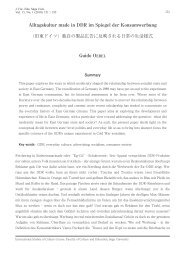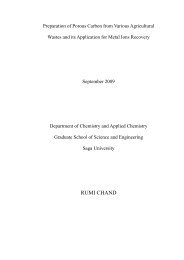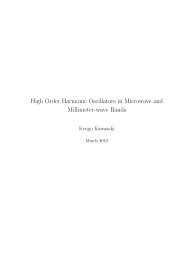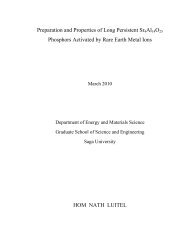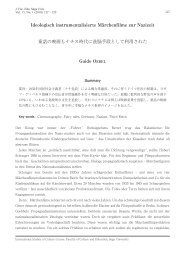ε (eV)
ε (eV)
ε (eV)
Create successful ePaper yourself
Turn your PDF publications into a flip-book with our unique Google optimized e-Paper software.
CHAPTER 1<br />
PRINCIPLES OF SURFACE DISINFECTION<br />
1.1 Introduction<br />
AND STERILIZATION<br />
The development of sterilization concepts has a long history starting from the<br />
end of 19 th century when the first rules for controlling the spreading of pathogen<br />
agents were established [1]. Boiling of the medical instruments and the first steam<br />
sterilizer has been introduced in the 1880 0 s [1, 2]. Not much latter, the concept<br />
of non-thermal sterilization method for food, drinks and materials preservation<br />
has gained more attention. Therefore, chemical gas and liquid disinfectants were<br />
adopted as low temperature alternatives. The most common chemical sterilant,<br />
still intensively used nowadays, is the ethylene oxide gas which has been introduced<br />
in hospitals and medical industry starting with 1940. [1,3].<br />
The application area for pathogens destruction has not been covered only by<br />
thermal and chemical methods. The decontamination potential of the electromag-<br />
netic radiation as for example gamma or X rays irradiation was tested starting<br />
with the second half of the last century [1]. Not much latter, electrical gas dis-<br />
charges were introduced as an original approach suitable for microbial inactivation<br />
1



